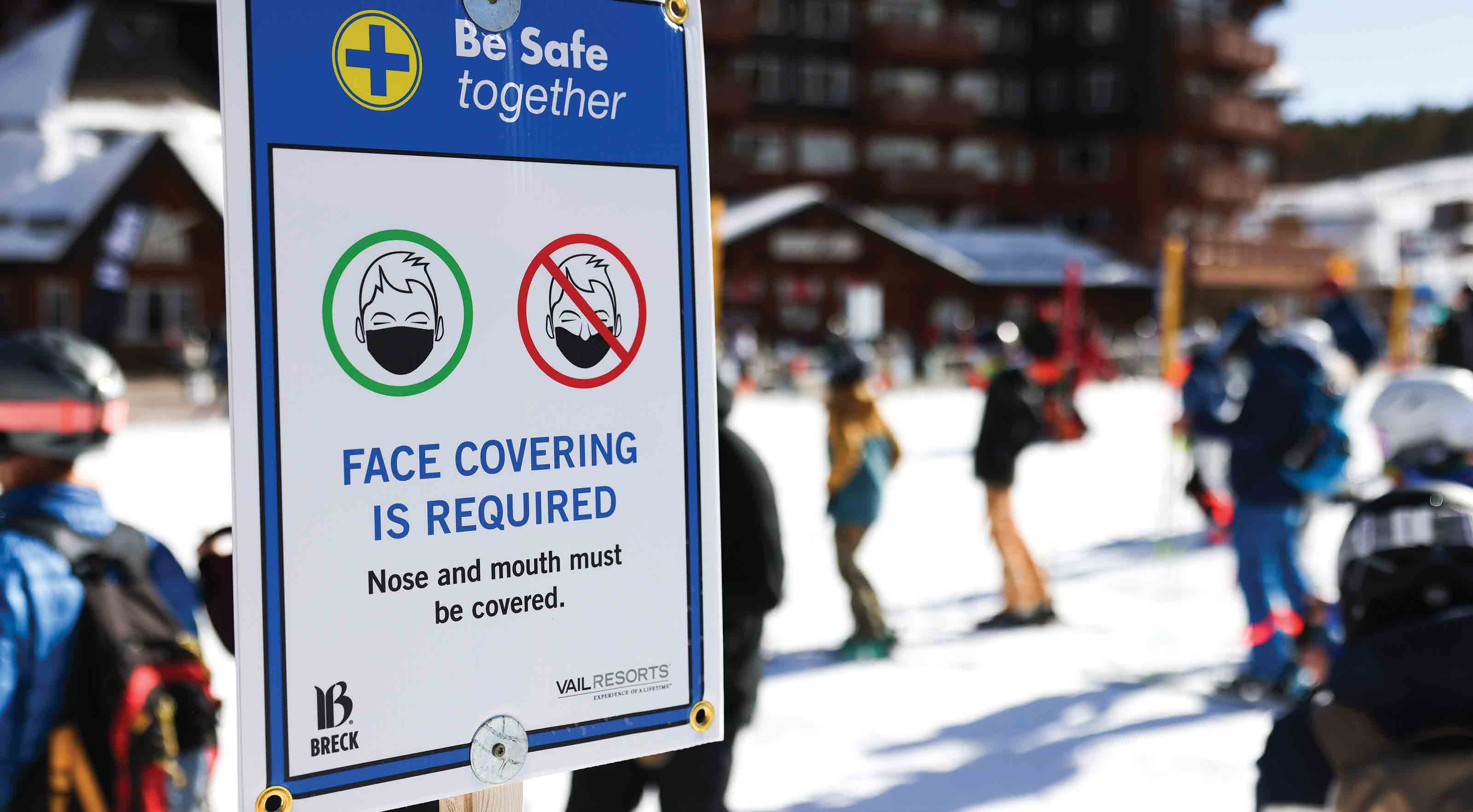How to Stay Safe on the Slopes
Ski resorts have made changes to deal with COVID. Here’s what to expect.


After hunkering down through lockdowns and quarantines for nearly a year, downhill skiing enthusiasts are eager to hit the slopes. Skiing is a relatively COVID-safe activity: It’s outdoors, social distancing is built in, and masks and gloves are already de rigueur. But ski resorts have made changes this winter to try to keep skiers safe.
Avoid the crowds. You’ll encounter mask-wearing mandates and social distancing protocols designed to limit crowding and control potential spread of the virus. Crowded ski areas pose the same risk they did at the outset of the pandemic: the potential for a widespread outbreak, like the one at the Ischgl ski resort in Austria last March that infected thousands of people. Consider going midweek to avoid the weekend and holiday crowds.
Anticipate longer lines and limited indoor spaces. Many lodges will be closed, except for bathroom use. So if you don’t already boot up in your car, it’s a good time to start. Dressing warmer, using heat packs or battery socks/boots, is going to be critical when you can’t duck into a lodge to warm up. And at the lifts, you may be asked to ride only with the people in your party. Mountain access may be further restricted in areas using gondolas or trams. (The tram at Jackson Hole in Wyoming is running at lower capacity, for example.)

Sign up for Kiplinger’s Free E-Newsletters
Profit and prosper with the best of expert advice on investing, taxes, retirement, personal finance and more - straight to your e-mail.
Profit and prosper with the best of expert advice - straight to your e-mail.
In many places, you may not be able to rent equipment or even purchase passes at the mountain. A number of mountains have reservation systems in place, requiring skiers to go online to reserve the days they’d like to ski. Resorts that don’t have reservation systems will have capacity limits to control the number of skiers.
The social aspect of skiing is taking a hit from the pandemic, too. Expect fewer restaurants and outdoor grilling areas to be open, and much less après-ski activity. Any food available will often be grab-and-go.
Stay flexible. If you book reservations at a resort, you’ll need to be prepared for last-minute changes. Local and state public health regulations can shift rapidly. In some ski areas, such as in Vermont, skiers will be asked to quarantine if traveling from out of state and to provide contact information to enable contact tracing should there be an outbreak. (Visit DiscoverSnow.org and select the COVID-19 tab for information for ski areas by state, ownership group or pass type.)
Do some research before purchasing lift tickets to see if you can get your money back if you get sick, if regulations change and prohibit you from traveling, or if the mountain closes. Many resorts have coronavirus-related refund policies this year, so if you have to cancel, you may be able to get at least some of your money back. Refunds for season passes are often prorated depending on how many days you ski. For example, the Ikon and the Epic season passes, which grant access to dozens of resorts in the western U.S. and worldwide, have built-in refunds or credits toward a 2021–22 season pass if resorts are forced to close because of COVID.
Get Kiplinger Today newsletter — free
Profit and prosper with the best of Kiplinger's advice on investing, taxes, retirement, personal finance and much more. Delivered daily. Enter your email in the box and click Sign Me Up.

Emma Patch joined Kiplinger in 2020. She previously interned for Kiplinger's Retirement Report and before that, for a boutique investment firm in New York City. She served as editor-at-large and features editor for Middlebury College's student newspaper, The Campus. She specializes in travel, student debt and a number of other personal finance topics. Born in London, Emma grew up in Connecticut and now lives in Washington, D.C.